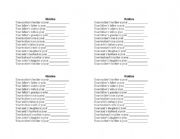
|
Family Relationship Riddles
These are riddles to help students think about the meaning of the family vocabulary words, not just the translation. Suggestion: Use in preparation for listening to "I�m My Own Grandpa."
Level: elementary
Age: 8-17
Type: activity-card
Downloads: 15
|
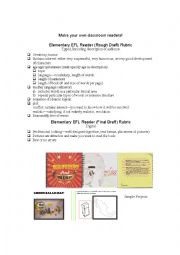
|
Guidelines for writing classroom readers
Students can help develop a classroom library! When each student writes and illustrates a story, there will soon be lots of reading material! These guidelines help students in creating proper expectations for the project.
Level: advanced
Age: 12-100
Type: activity-card
Downloads: 15
|
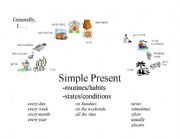
|
Simple Present and Present Continuous Posters
Posters demonstrating the meaning (with pictures, key words/phrases)and form (with example sentences)of the simple present and present continuous.
Level: elementary
Age: 12-17
Type: grammar-guide
Downloads: 14
|
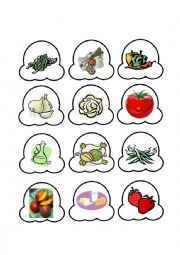
|
Popcount! (game) Game Card Sheet 1
Inspired by an alphabet game for preschool students, this game practices instead count and noncount nouns + food vocabulary. I made up this game to review the vocabulary given in Unit 12 of Cambridge�s Touchstone Level 1 materials. There are 6 sheets of game cards and a sheet with the correct number of logos (for pasting on the back of the cards).
Level: elementary
Age: 8-17
Type: activity-card
Downloads: 13
|
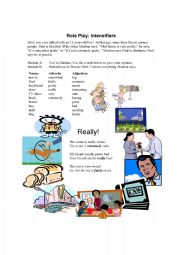
|
Precise Paul and Intensifiers: somewhat, fairly, really, extremely
Precise Paul always corrects his sister. Students will follow this role play to practice changing the degree of adjectives with intensifiers (somewhat, fairly, pretty, really, very, and extremely). You might change his name to Precise Peter for a more pleasant pronunciation.
Level: elementary
Age: 11-17
Type: flash-card
Downloads: 13
|
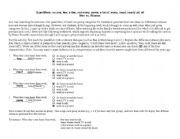
|
Quantifiers: Men vs. Women
This exercise provides options of things men and women might do in different circumstances, asking students to choose to describe either men or women and to add the quantifier: few, some, most, nearly all, etc. *It does not involve the concept count/noncount. With my class, I emphasized that a plural noun comes right after the quantifier.
Level: elementary
Age: 13-17
Type: worksheet
Downloads: 11
|
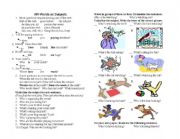
|
Wh-Words as Subjects
This worksheet first shows the difference between regular wh-questions, which invert the subject and the (auxiliary) verb, and questions in which the wh-word is the subject. Students identify the subject in several sentences, and then they select the picture that shows the difference between the wh-word acting as subject and as object--requiring th...
Level: elementary
Age: 12-17
Type: grammar-guide
Downloads: 11
|
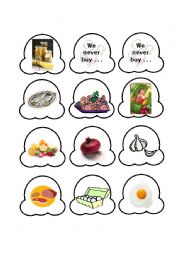
|
Popcount! (game) Game Card Sheet 5
Inspired by an alphabet game for preschool students, this game practices instead count and noncount nouns + food vocabulary. I made up this game to review the vocabulary given in Unit 12 of Cambridge�s Touchstone Level 1 materials. There are 6 sheets of game cards and a sheet with the correct number of logos (for pasting on the back of the cards).
Level: elementary
Age: 8-17
Type: activity-card
Downloads: 10
|
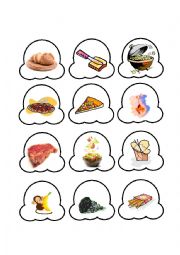
|
Popcount! (game) Game Card Sheet 6
Inspired by an alphabet game for preschool students, this game practices instead count and noncount nouns + food vocabulary. I made up this game to review the vocabulary given in Unit 12 of Cambridge�s Touchstone Level 1 materials. There are 6 sheets of game cards and a sheet with the correct number of logos (for pasting on the back of the cards).
Level: elementary
Age: 8-17
Type: activity-card
Downloads: 10
|
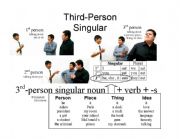
|
Third-Person Singular Poster
In addition to the traditional table showing the third-person singular change for the simple present tense, this poster gives examples of what types of nouns might take the place of "he/she/it" and illustrates the meaning of first-, second-, and third-person.
Level: elementary
Age: 8-17
Type: grammar-guide
Downloads: 10
|